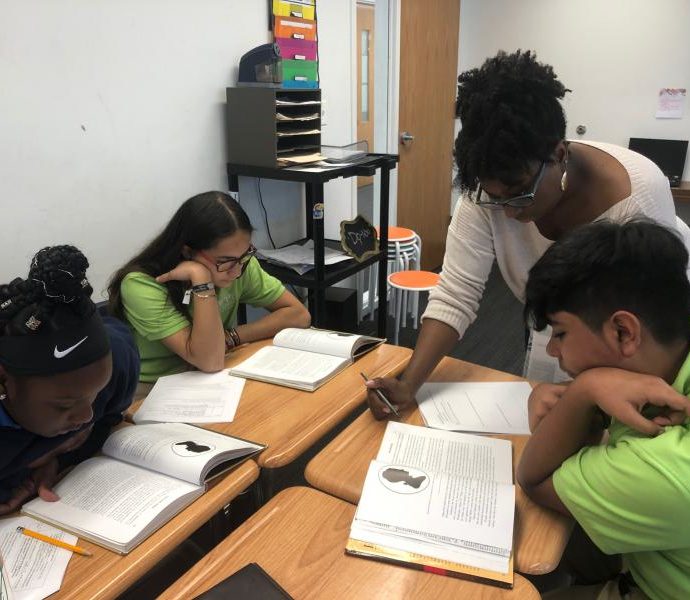This Kansas City Teacher Doesn't Shy Away From Martin Luther King Jr.'s Full Legacy
ByElle Moxley
Read the full article at kcur.org>
Most children are taught that Martin Luther King Jr. created change through peaceful protest, but that narrative oversimplifies the civil rights leader’s legacy.
In schools that make racial equity a priority, educators are starting to change how they teach about King.
Last week, a quote from Martin Luther King Jr. greeted seventh graders in Lauren Rodriguez-Celestin’s class at KIPP Endeavor Academy.
“Why are you not going to be in school on Monday?” she asked. “Ja’Corey, go ahead.”
“Martin Luther King,” Ja’Corey said.
“And what have you been taught in school about that?”
“He was part of the civil rights movement,” said Kayla, “and he even won a Nobel Prize for it.”
“In school you guys are taught that he was all about nonviolence, but this quote right here?” Rodriguez-Celestin said, reading from the board. “‘Freedom is never voluntarily given by the oppressor; it must be demanded by the oppressed.’”
Rodriguez-Celestin asked her students to think about King’s quote while they read from a nonfiction text, “An American Plague,” by Jim Murphy. It’s a book about the spread of Yellow Fever in Philadelphia in 1793. The passage students are reading aloud is about the exodus from the city.
Clothes were packed in haste, windows slammed and shuttered, doors locked taught. Sometimes servants were ordered to stay behind to guard the house against thieves.
“Who were the people who did not have the option to leave? The poor people,” Rodriguez-Celestin said. “‘Freedom is never voluntarily given by the oppressor; it must be demanded by the oppressed.’”
Among those who couldn’t flee: slaves. Black nurses were expected to care for the sick. At the same time, slaves were blamed for bringing the disease with them from the West Indies.
“Why wouldn’t they stop bringing slaves over if slaves were the ones supposedly giving it to anybody?” Rodriguez-Celestin asked her students.
“OK, so it’s either slave owners they had the need to have a slave,” said Serenity, “or that they knew if they gave the slaves freedom, they would have their own power and they probably didn’t want that to happen.”
There was a pause before Rodriguez-Celestin snapped her fingers, a sign of praise used in many classrooms. “Good,” she said. “That’s exactly it.”
An epidemic in 1793 might feel like ancient history to a seventh grader, but Rodriguez-Celestin’s framing made it resonate in a classroom that’s entirely nonwhite.
“I am hard on you because you have to be excellent,” Rodriguez-Celestin told her class. “You have to be. It’s not an option. Black and brown bodies, you don’t get that option. What you learn in here is that freedom.”
